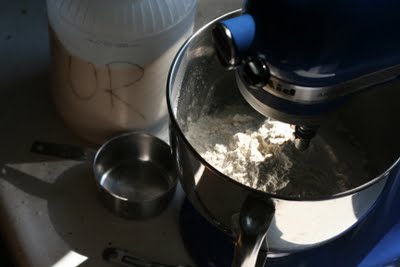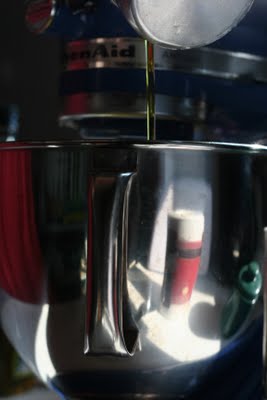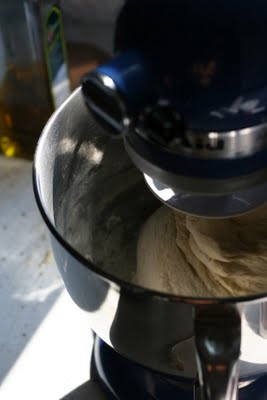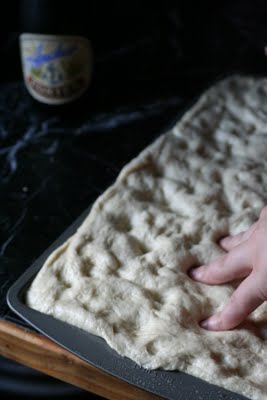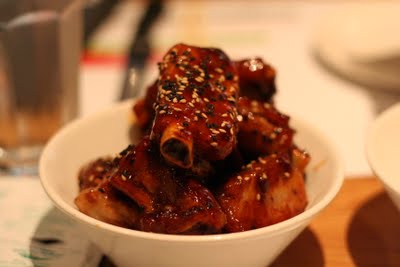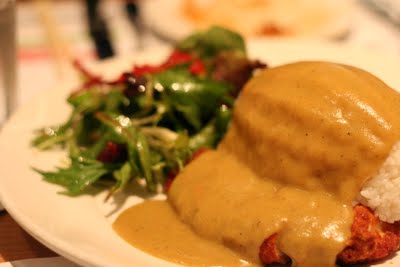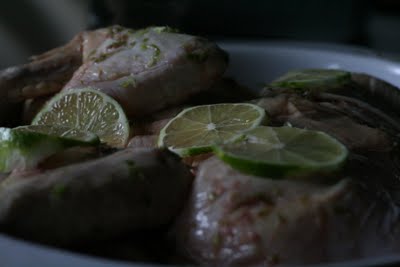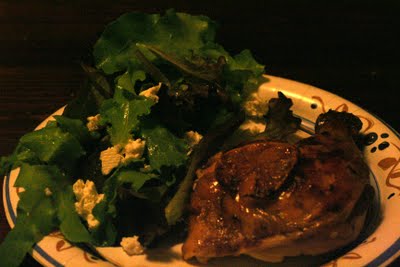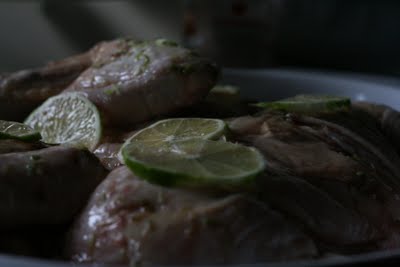
Let’s talk hot, shall we? I know that if you live south of the New England you are not really phased by the really hot temps. But I am. I’m kind of a pansy when it comes to all forms of extreme temperatures – below 20 degrees give me a book, a warm blanket and a cup of cocoa and tell me when it’s warm again. When it’s stiflingly hot though – there isn’t a lot I can do aside from try not to move too much. I know that there are actual ways to combat being hot (drink lots of water, take a cool shower, stand in front of the AC unit until your skin goes numb, etc) but these are only temporary solutions. They seem to not really solve the problem.
The best way to “beat the heat” that I have learned this summer came on a whim of inspiration the same night I made that delicious focaccia bread. The visiting friend hadn’t brought much with her when she came down since we had planned an epic day of cooking. What she did bring though was crucial to our choices that evening – a bottle of prosecco. Now I have a confession – I prefer cava or prosecco over actual champagne every time, I don’t know a lot about wine but I find a nice cava (Freixenet anyone?) far superior to most sparkling wines.
As we chilled the prosecco (she had brought Lunetta) I started to peruse my cabinets and fridge wondering about cocktails and mimosas. I eventually settled on this cocktail. I have heard a lot about elder flower liquor recently around the interwebs and on an impulse bought a nip of it to taste, also I thought the bottle was really pretty. I tried it alone, not really sippable, but with prosecco and some POMWonderful it was divine. The complexities of the elder flower liquor really shone with the sparkles of prosecco. And the way the bubbles burst on your tongue makes these cocktails a lovely hot summer evening drink for me. I found them indulgent and refreshing, a combination I plan to hold onto for a while longer.
Pomflower Sparkling Cocktail
Note: I made that word up.
1/2 oz Elder flower liquor (such as St. Germain)
1 oz pomegranate juice (such as POMWonderful)
2 oz chilled Prosecco or Cava (I love this with Freixenet but your favorite will probably work too)
Add the elder flower liquor and pomegranate juice to the bottom of a champagne flute and swirl them for a minute to mix. Top the glass with the chilled sparkling wine. Serve these with a crostini, or just some tasty bread, while sitting on a porch at sunset. Marvel at the pinkness of the cocktail and share.
Note: POMWonderful gave me the pomegranate juice to use, but all the opinions here are my own and I would buy the POM juice again to make this cocktail alone.




